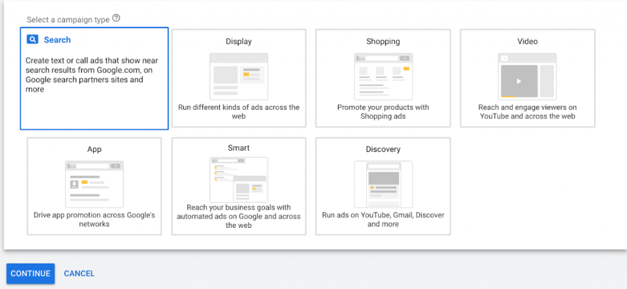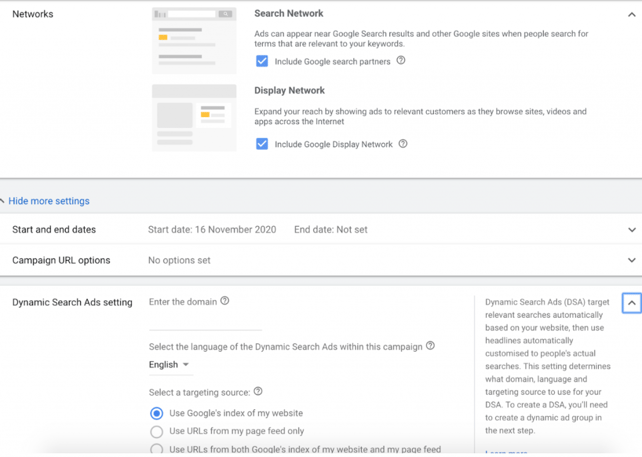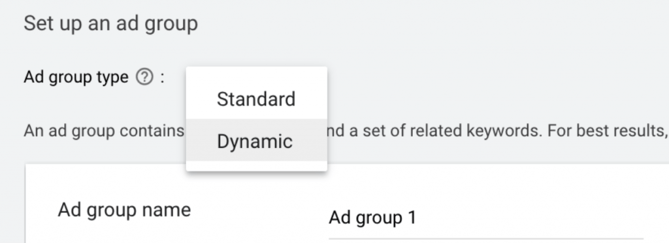
Are you struggling to find relevant keywords to bid on in search? Do you find yourself struggling to hit good click-through-rate levels on search? Then dynamic search is definitely something for you to consider in your ads account!
In this blog, I’ll run through what dynamic search is, how you would use dynamic search, why you would use it & some quick tips to get the best early performance.
What is dynamic search?
In short, dynamic search is a way of casting the net to capture new customers who are searching exactly for your product but not through the traditional keywords that you are bidding on. You’re able to utilise this campaign to be able to bid on certain categories or urls of your website or every page if you’re wanting to. Depending on what products you’re wanting to push or what products you want to get more volume out of depends on which set up you choose
If you were to see a dynamic search ad, you wouldn’t know that you were looking at one as they look & appear in the exact same place as standard search ads. The only difference is that you don’t have control over what keywords you’re appearing for or what your headlines are saying & the URL the user is being taken to.
Now that might not sound all that promising but what keywords you appear for, what your ad says & what url they are taken to is decided based on your website. So for example if someone is searching ‘Kenzo mens t-shirt with free delivery’ and you have a section on site for kenzo t shirts, then they will be taken to that page and if you offer free delivery then your ad will say free delivery.
You’re going to want to be considering & looking into dynamic search if you have a large stock level or you’re regularly adding new / refreshing products. That’s not saying if you only have a smaller number of products then don’t set up dynamic search, you’re just going to see easier & quicker results the more products you have.
You might be left wondering now, how do I set this up?! Well luckily enough it’s very easy to set up and even a PPC novice can’t get lost. All you have to do is follow these simple screenshots and you can’t go wrong:
Step 1 – navigate to create a new campaign and select a ‘search’ campaign.

Step 2 (A)- Under ‘Networks’ there will be a drop down for ‘Show more settings’ and within there, there is a drop down again for ‘Dynamic Search Ad settings’ and from there you want to pop in your domain name.

Step 2 (B) – Under ‘Networks’ there will be a drop down for ‘Show more settings’ and within there, there is a drop down again for ‘Dynamic Search Ad settings’ and from there you want to pop in your domain name
Step 3 – Once you have created your campaign and move onto making your adgroups you want to make sure that your ad-group type is set to ‘dynamic’ and not to ‘standard’.

Step 4 – You can then set up and choose whether you want your ad group to focus on a select category, a specific url or urls or you can focus on the full website. Then from there you can ‘set up’ your ads by adding in some creative descriptions.
Now you have set up a dynamic search, that doesn’t mean that you can just leave it to run and it will perform exactly how you want it to. You still have to optimise these campaigns to get the best performance out of them. A tip that you might think is obvious but many overlook is adding in negative keywords!
I can’t stress this strongly enough, just because Google is determining your keywords doesn’t mean they are going to get it right 100% of the time so you need to still add negatives. To start you off, I’ll give you a negative that you want to add in most dynamic search campaigns and that is your brand name & all the misspells of your brand name. This is easily overlooked but search terms that your dynamic search campaign will pick up on easily. So to get a true reflection of how your campaign is performing I’d negative your brand name. After this, if you have your ad groups set up in categories or all website pages then you’ll want to look into adding negative urls too. You’d want to be adding these sparingly and only really if the urls are racking up a big spend for no conversions.
Massive thank you to the wonderful PPC Account Manager Sam for this insight into Dynamic Search Ads. Has Sams post got you thinking on how you can apply these updates within your account? Contact our team NOW.
Tags:
November 23, 2020